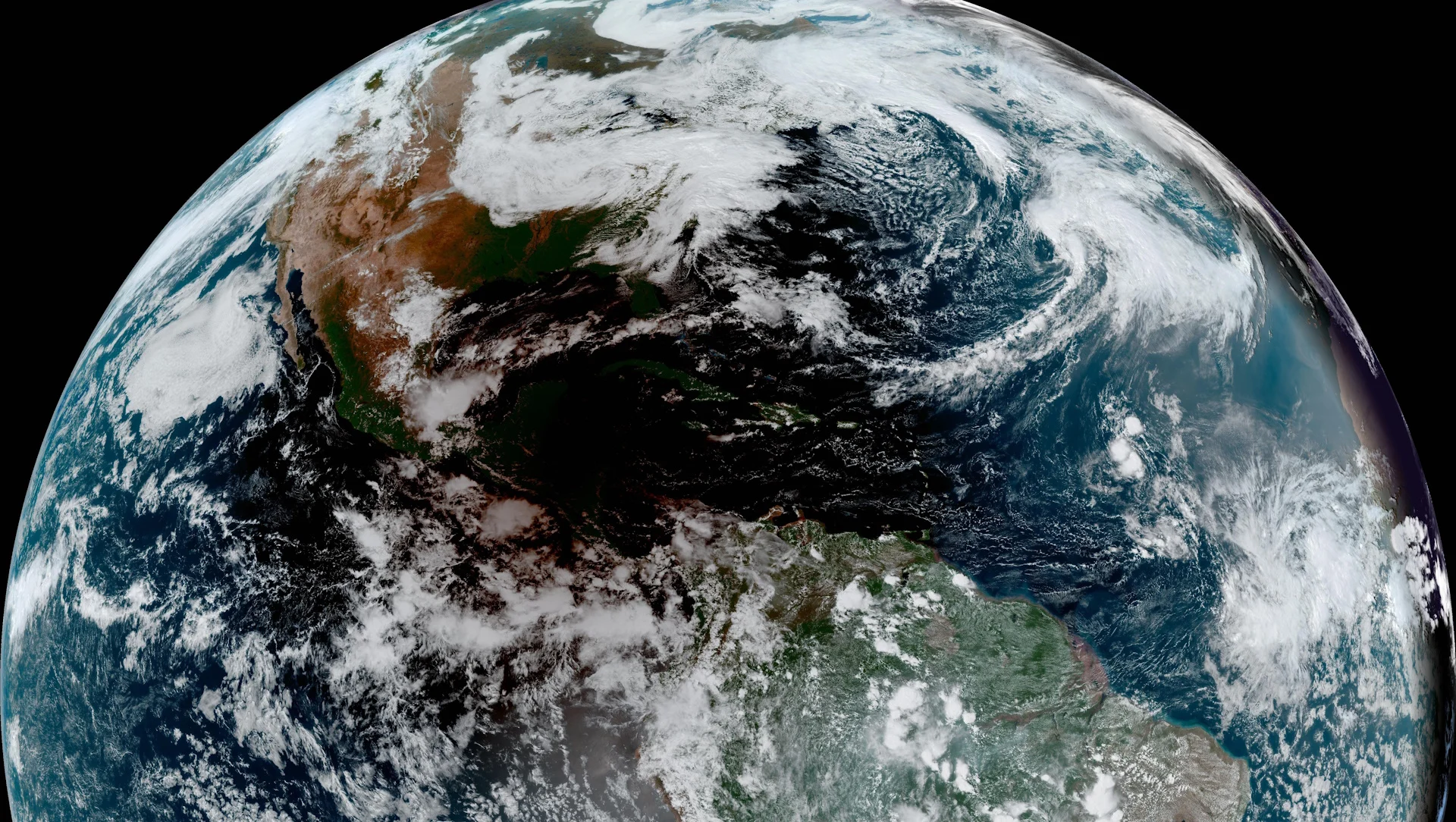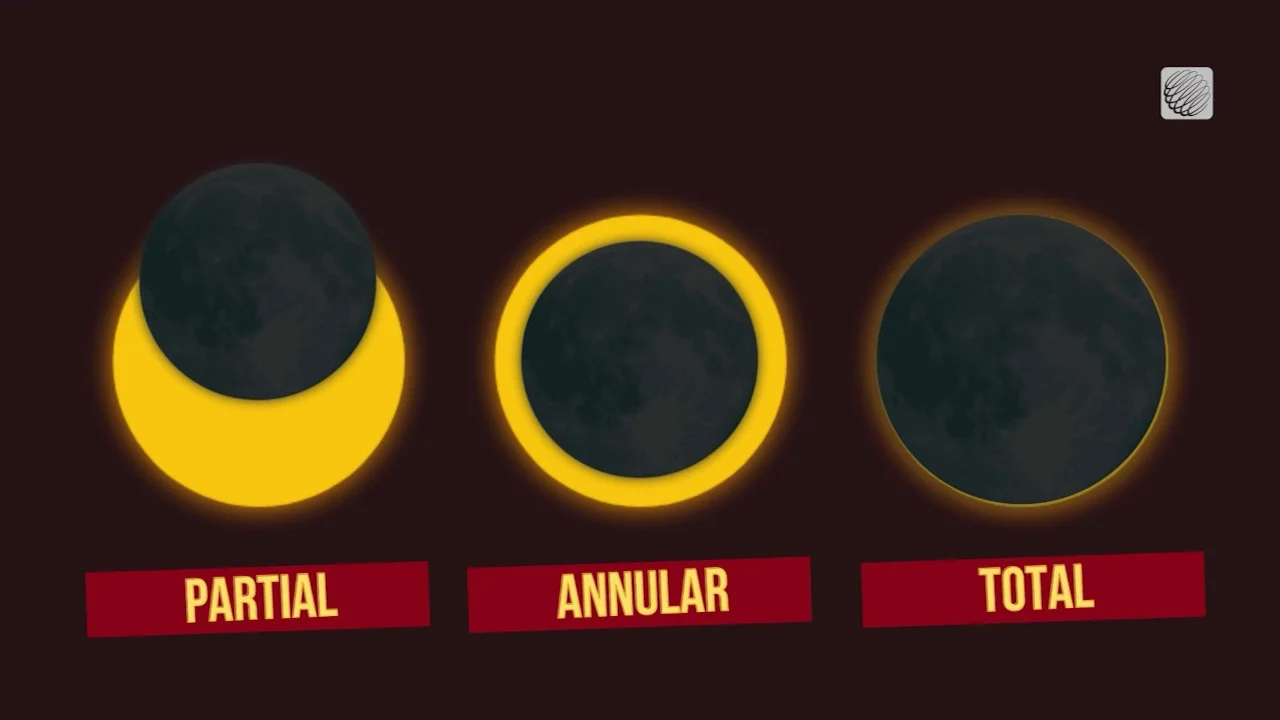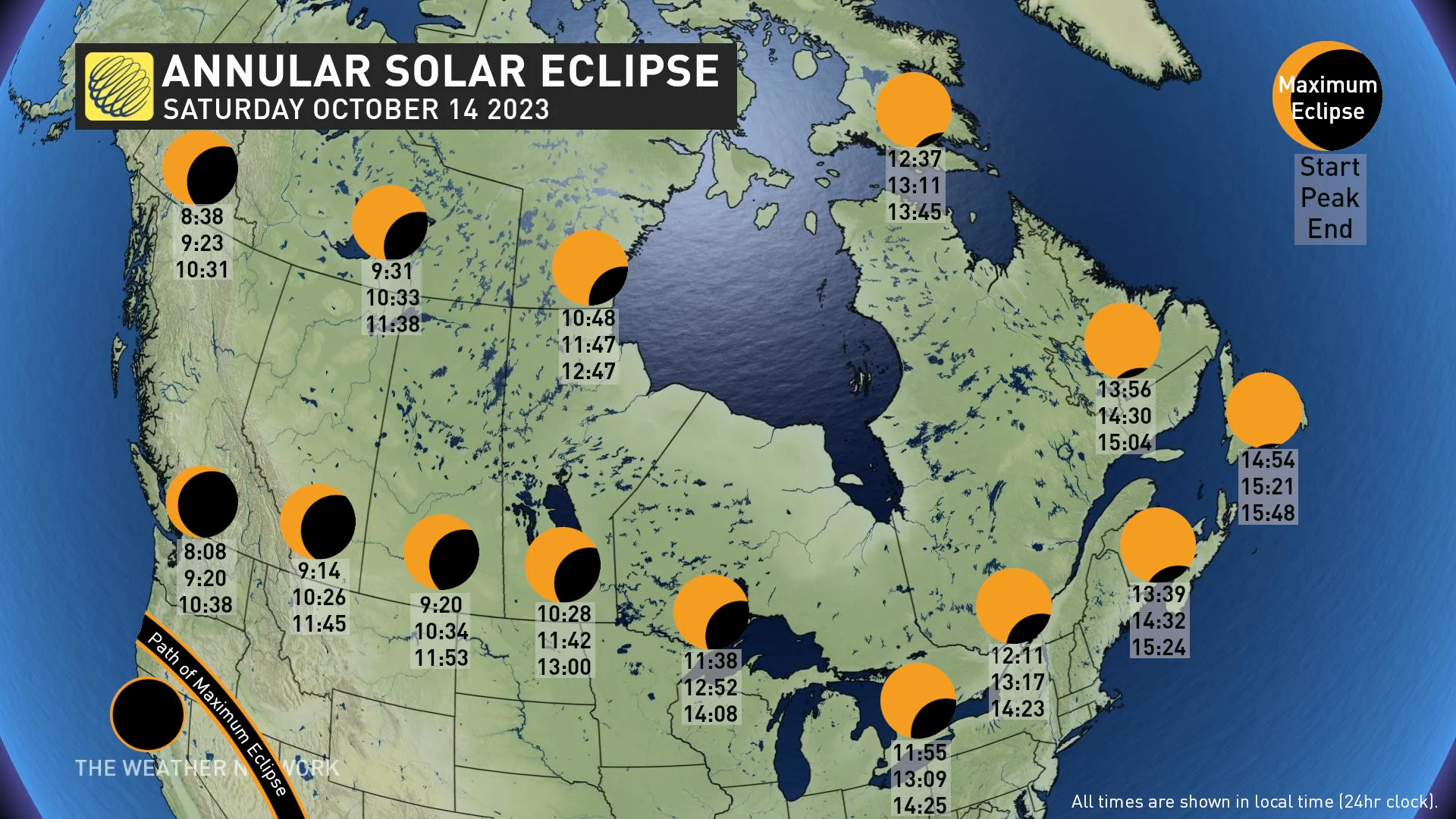
PHOTOS: 'Ring of fire' solar eclipse sparkles over Canada, U.S.
Canadians from coast to coast had the opportunity to see a little less Sun on Saturday as a partial solar eclipse unfolded through the day
A ‘ring of fire’ solar eclipse graced the midday skies over North America on Saturday as the Moon passed directly between the Sun and Earth.
The event, known as an annular solar eclipse, only obscured the centre part of the Sun at its peak coverage across parts of the U.S., Mexico, Caribbean, and South America, leaving only the outer edges of our star visible for several minutes.

PLAN AHEAD: Canada, next year we're in for a once-in-a-lifetime solar eclipse
Solar eclipses occur during a new moon when our orbital companion passes between Earth and the Sun. The Moon’s slightly tilted orbit means that it usually passes just above or below the Sun in the daytime sky.
But every once and a while, the three bodies line up perfectly so that the Moon obscures the Sun for a brief but spectacular eclipse.
Saturday’s eclipse occurred when the Moon is at its farthest point from Earth, just a bit too far away to completely obscure the Sun’s disk in the sky.
This size difference leads to an annular eclipse that makes the Sun appear as if it were a sparkling ring at the moment of peak coverage.
Folks across the southwestern United States got to enjoy the full eclipse, as the centre of totality passed northwest-to-southeast from Oregon to Texas.
Canadians with proper protection had the opportunity to see much of the Sun obscured during a partial eclipse, though, with as much as 80 percent of the Sun’s disk obscured over Vancouver, British Columbia.

Widespread clouds hampered the view across much of the country on Saturday. But don’t fret if you missed out on this weekend’s eclipse.
An even better opportunity to see a total solar eclipse will arrive on Canadian soil on April 8, 2024, with a few moments of complete darkness possible at totality across parts of Ontario, Quebec, and the Atlantic provinces.
Check out some of the incredible sights from Saturday’s ‘ring of fire’ eclipse, below.
Header image courtesy of NOAA.











